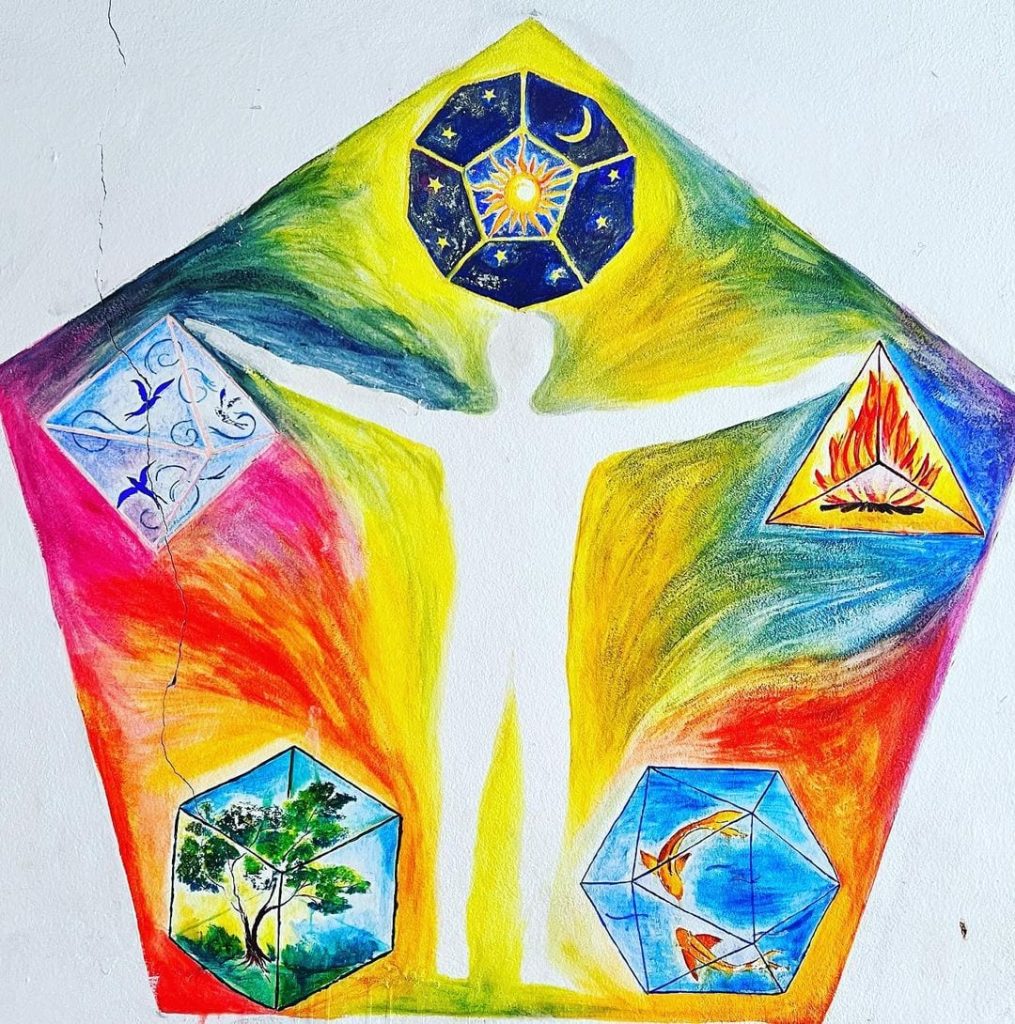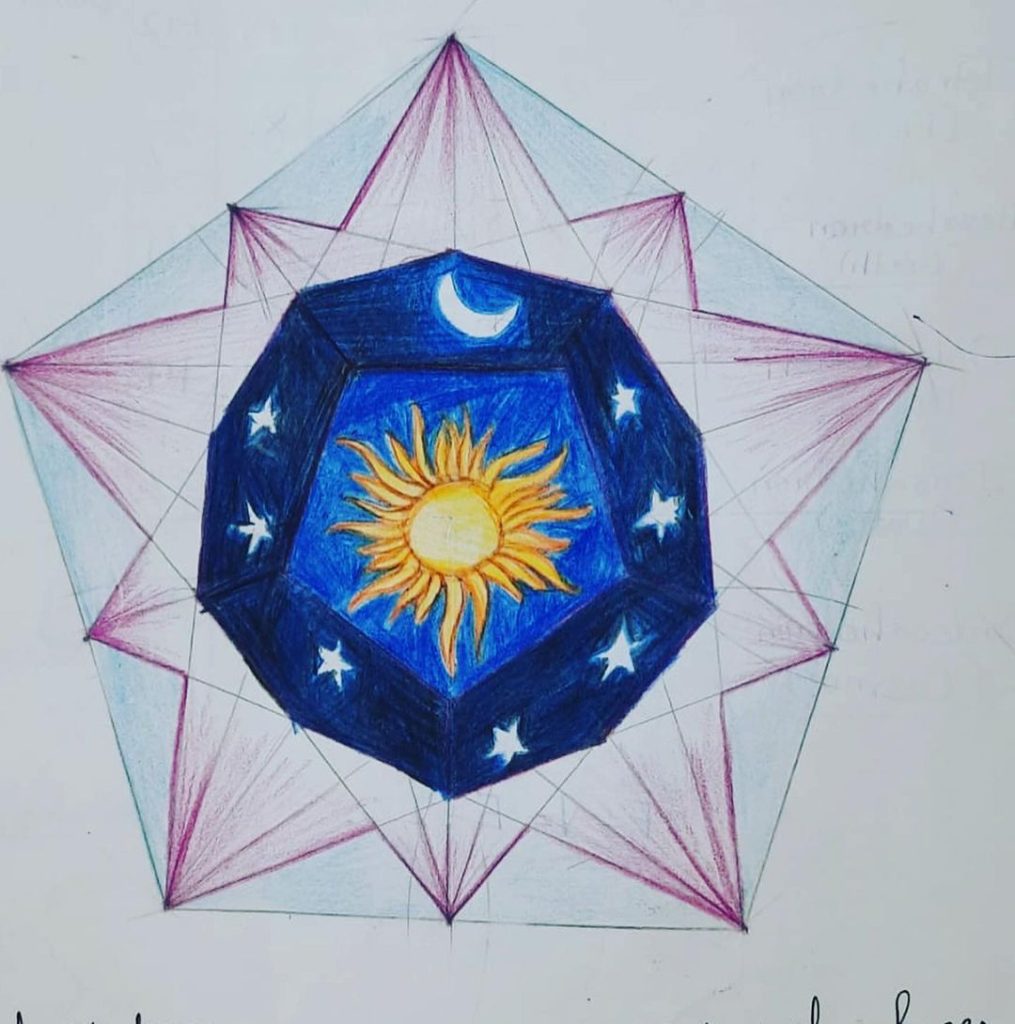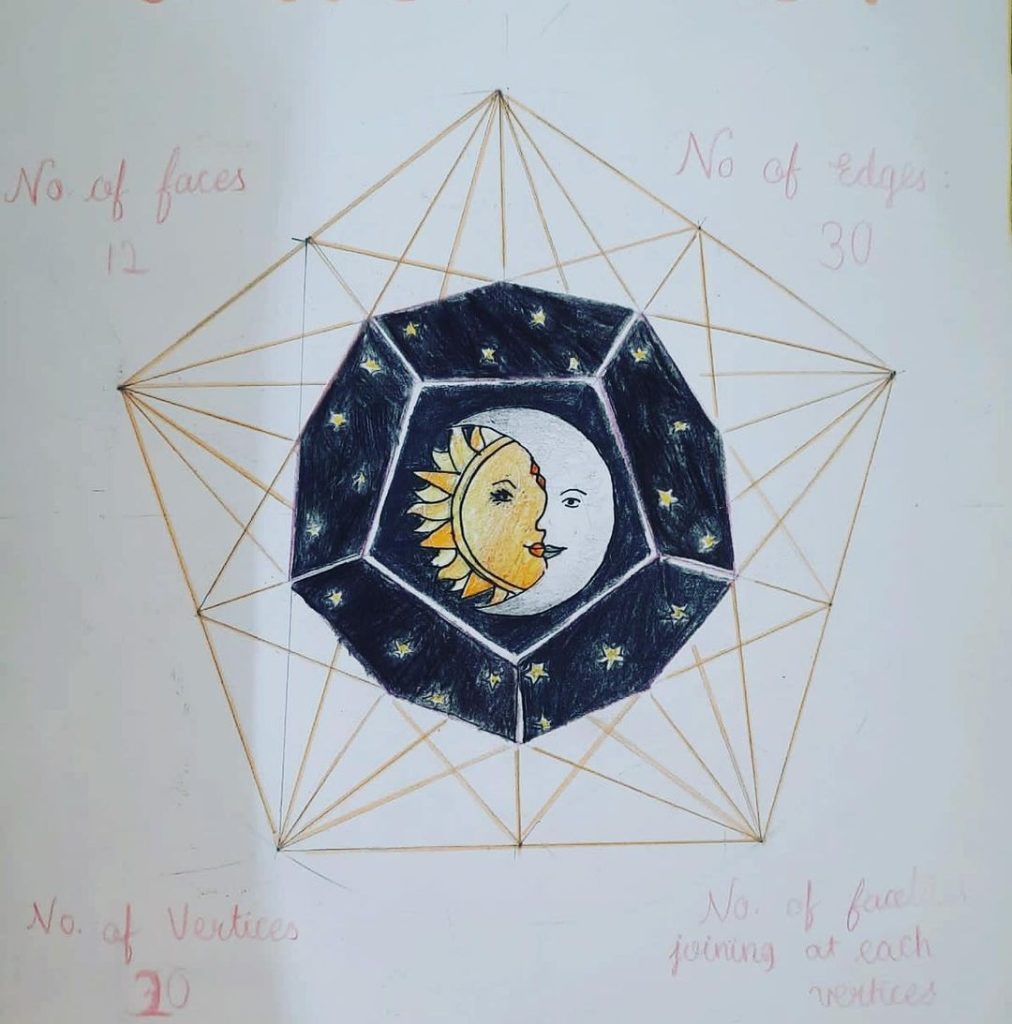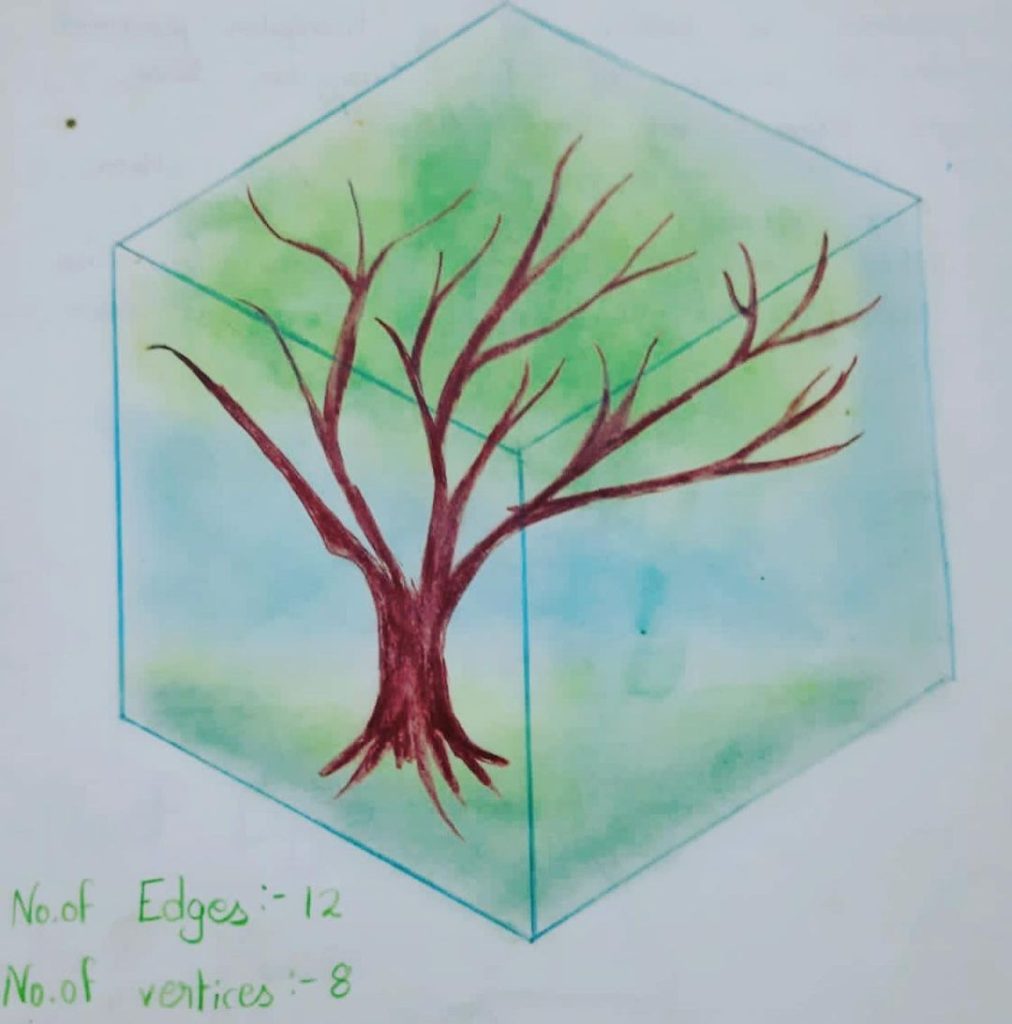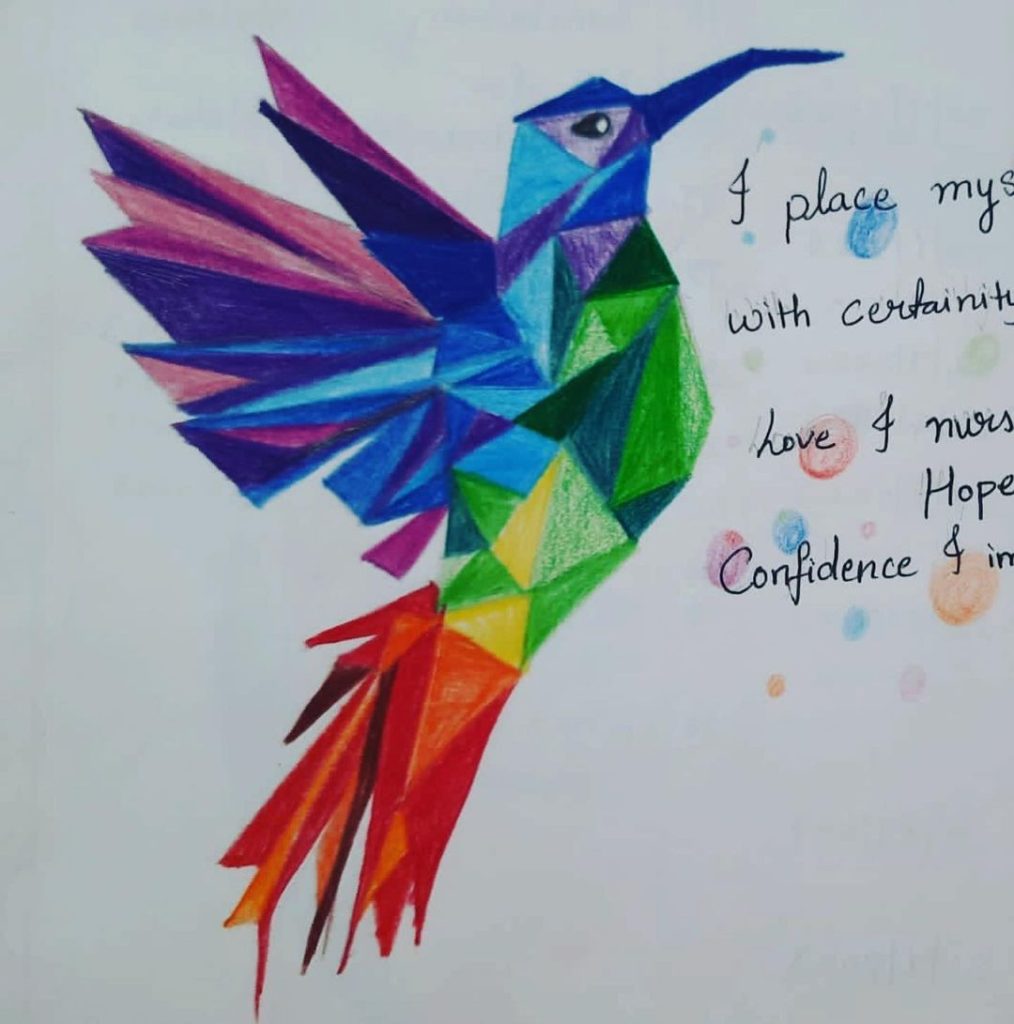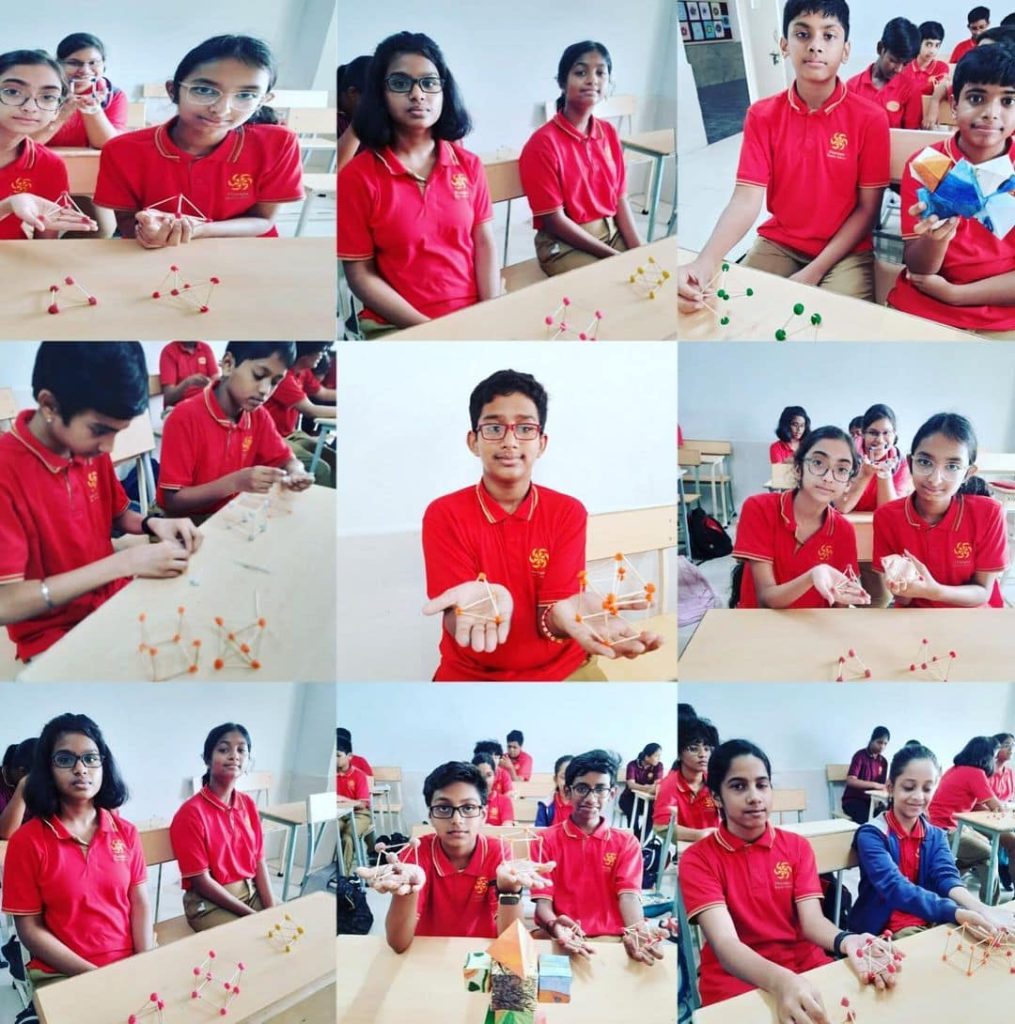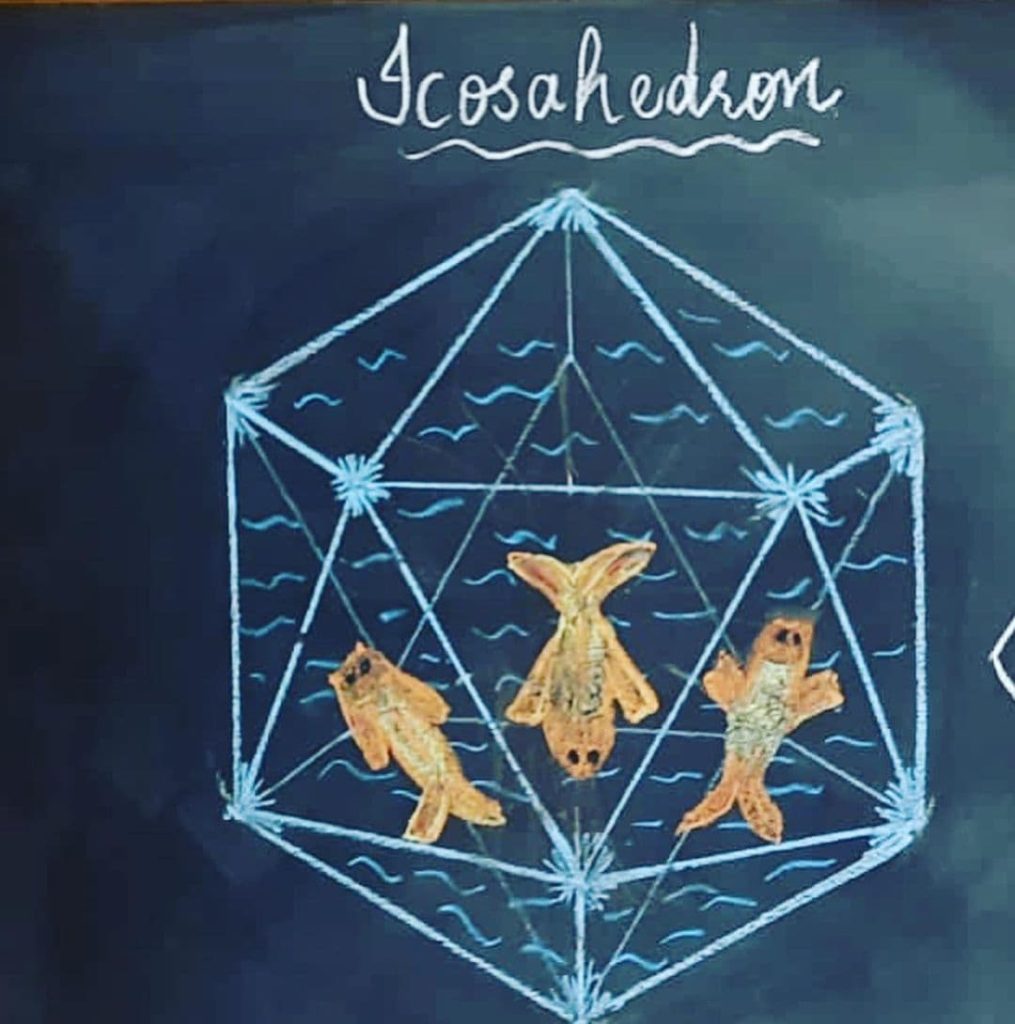“The right thing is to proceed from second dimension to third, which brings us to cubes and other three dimensional figures.”
— Plato
Our eight graders enjoyed their Platonic Solids main lesson.
From First Grade, Waldorf students begin their study of geometry with simple lines and forms. By Eighth Grade, students see shapes not as simple forms but with unique qualities in the pattern of nature, much like the students themselves.
Geometry is the purest visible expression of numbers. It leads to the development of a 8th grader’s reasoning abilities and provides a bridge through which their mind can achieve its highest level in the realm of pure intelligence. It also focuses on the importance of purposeful thoughts, without which, the work would not come together as a unified whole.

